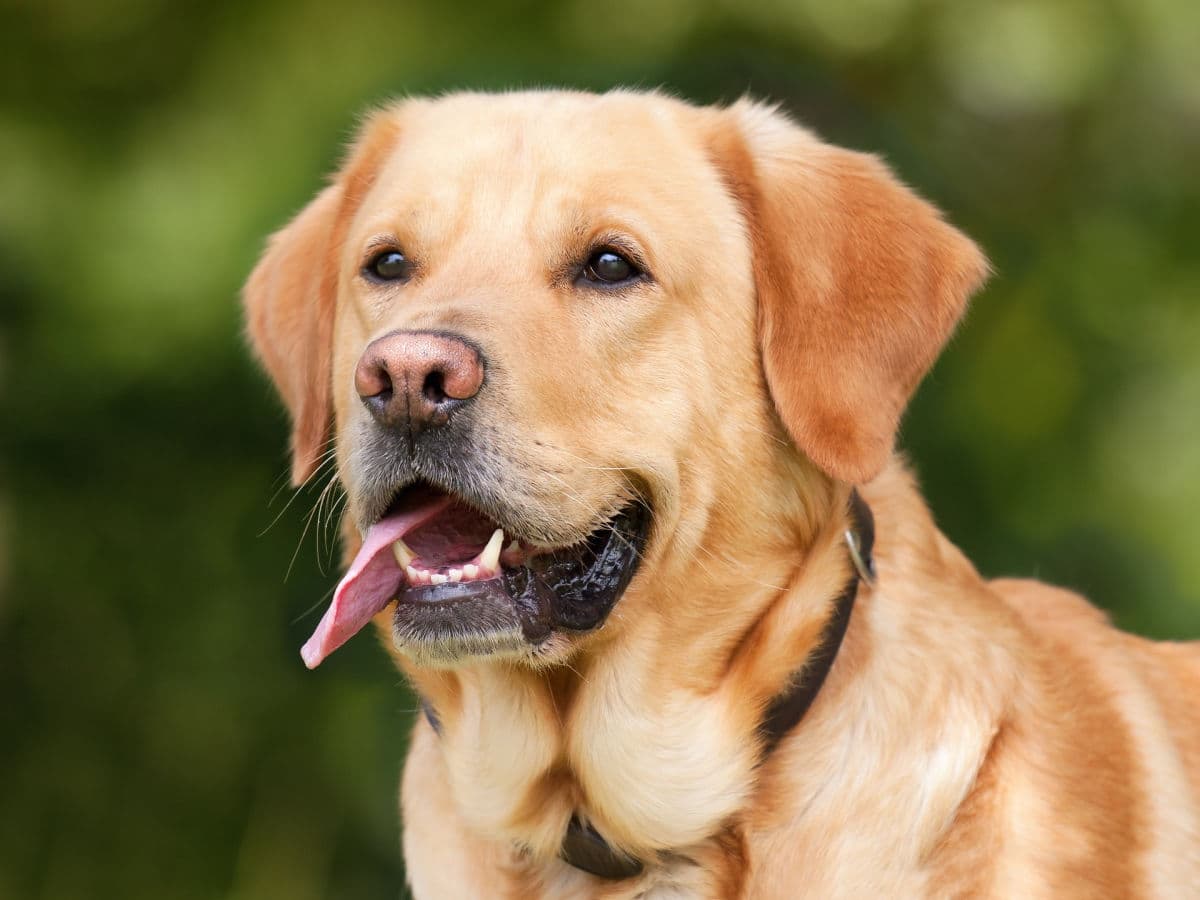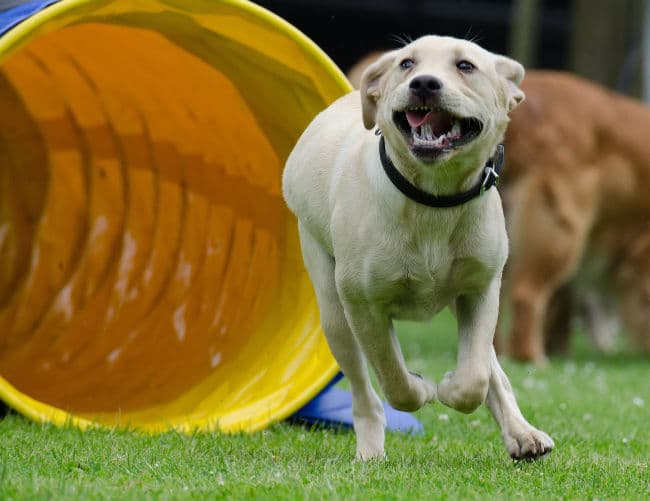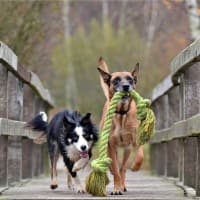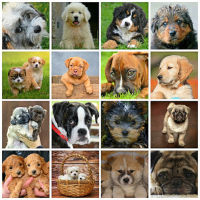FYI: If you buy something through a link on this site I may earn a commission - at NO extra cost to you.
The Labrador Retriever
The Labrador Retriever has been the #1 dog breed in the USA (according to the AKC's statisitics) for twenty-eight years straight! Wow, some achievement... and well deserved. Fantastic family dog.
The Labrador was originally bred as a hunter and water retriever and is still hugely a popular gun dog, as well as excelling in search and rescue and service dog roles.
The breed gets it's name from it's birthplace... Labrador, a Province on the east coast of Canada.
These are working dogs, bred to help fisherman in the cold, Canadian waters. From there, Labs were taken to England and then eventually to the United States (and of course they're also now found just about everywhere across the globe)

fun fact...
Originally all Labs were black in color.
During the late 1800's the first yellow pup was born in England (at that point these were called 'Golden Labradors'), and the first chocolate colored pups appeared during the 1930's.
Lab Stats
AKC Group: Sporting Group
Country of Origin: Province of Labrador, Canada
Size: Medium to Large
Height: 21.5 - 24.5 inches
Weight: 55 - 80 lbs (some males, especially the English type can reach over 100lbs)
Color: According to the official breed standard there are three colors.... Black, Yellow (anywhere from light cream to fox red) and Chocolate. Some breeders produce white & silver Lab pups but these are unusual, and are not able to be registered with the AKC.
Temperament: Sociable, loyal and loving
Activity Level: High (particularly during puppy hood)
Grooming: Minimal. Regular brushing.
Special Needs: Labrador Retrievers need plenty of exercise, puppies especially LOVE to play. Regular obedience training.
Possible Health Problems: Hip & Elbow Dysplasia, obesity, PRA (progressive retinal atrophy) You can visit my comprehensive Dog Eye Problems page as well as Animaleyecare.net/informational/general-disease-information, to learn more about eye issues.
More About The Labrador Breed
Labradors are great all-round dog for families of all shapes and sizes. They're hugely versatile and can excel at competitive obedience, hunting trials, flyball and more.

A Lab love the whole world and everyone in it, and they rarely meet a person (or another dog) that they don't like. Friendly, intelligent and eager to please these dogs learn commands quickly and are one of the most straightforward breeds to train.
They are an active breed, and regular daily exercise is a must (as is lots of love and attention). Some Labs can be a little high-strung and nervous, this seems to occur more often in chocolate labs than it does in the black or yellow varieties. BUT it's a genetic trait and this type of personality can show up in a pup of any color.
There is quite a noticeable difference in looks between English Labrador Retrievers and those from American lines. In general American labs tend to be lighter in terms of build, and the muzzle is more narrow. These are generally 'Field Lines' which means they're bred primarily as working dogs.
As with many other breeds, dogs bred from 'working/field lines' tend to be more high-energy and intense than those from 'show lines'. This means that they're likely to need more exercise, structure and training than those bred basically for shows or as pets.
Of course ALL puppies need exercise and training, but show lines or pups bred purely as pets rather than as working dogs are likely to be calmer and less excitable, which makes them a better fit for low-key family life.

A bored Lab can become very destructive (as can just about a pup of any breed), and the potential damage done by their very strong jaws and powerful urge to chew shouldn't be under-estimated.
As a child we owned a Lab who got bored one day while my parents were at work and literally chewed a hole through the kitchen wall!
If you want a more laid-back little guy, with the truly blocky, otter-tail type 'look', you're more likely to find him in English bloodlines.
However, neither is 'better' than the other and it's a personal choice which comes down to what your plans are for your Labrador Retriever puppy, and which look you prefer.
They're a very 'mouthy' breed, and this can make them 'nippy' as puppies. Luckily they're quick learners and proper no-bite training is usually very effective.
They can be inclined to want to eat rocks, sticks and dirt, and often love to carry something around in their mouths (they're hard-wired Retrievers remember!). Lots of sturdy chew toys are also a must for these puppies.
One other thing you need to know about this breed, is that they shed! Of course, most dogs shed (unless they're a hairless breed) but some lose more hair than others, Labs are definitely among the 'some'.
I'm not sure if there's any 'official' statement on this, but from my experience and research, it would seem that yellow labs are the worse offenders in terms of shedding, and chocolates probably the best (the chocolate coat is often a bit finer and silkier which may account for this). Black labs are somewhere in the middle.
Unless you're super house-proud this isn't a big deal (and most dog owners are used to having dog hair on, under and in everything!), but if you want some tips and advice on keeping loose hair to a minimum, check out my Dog Shedding & How To Handle It page
you might also like...
- Home
- Dog Breed Information
- Labrador Retriever
FTC Disclosure: Some pages on this site contain affiliate links. I may earn on qualified purchases.





